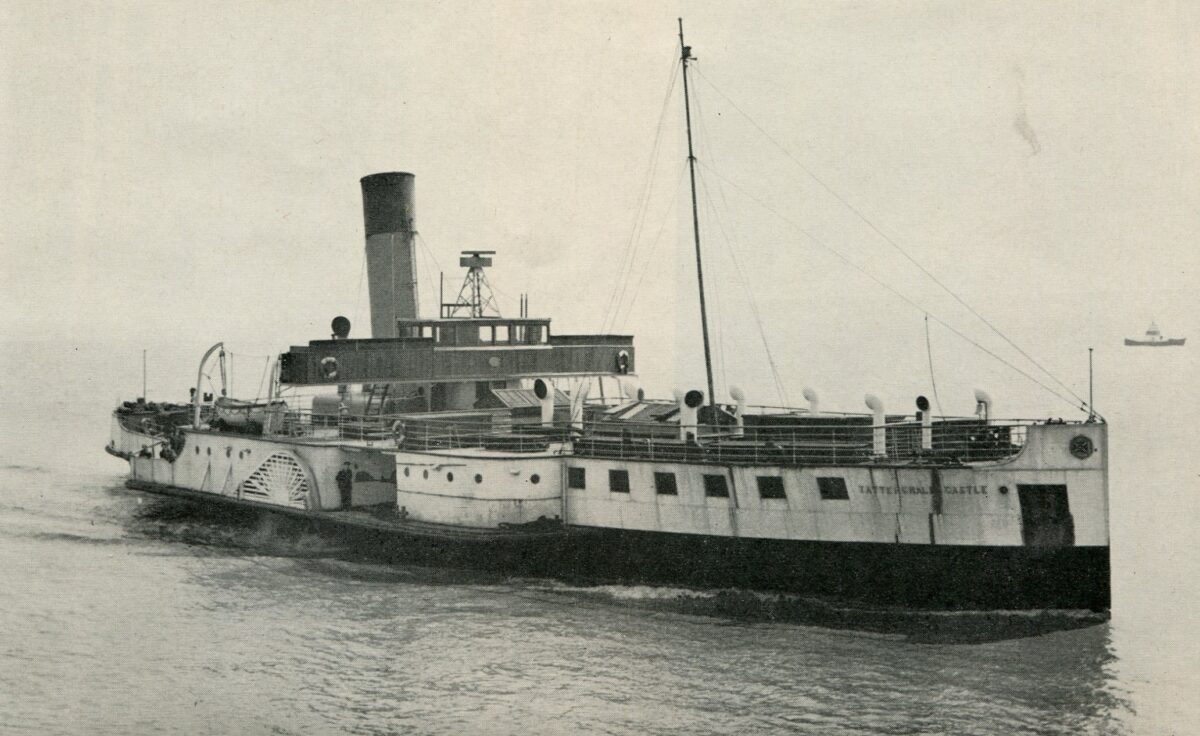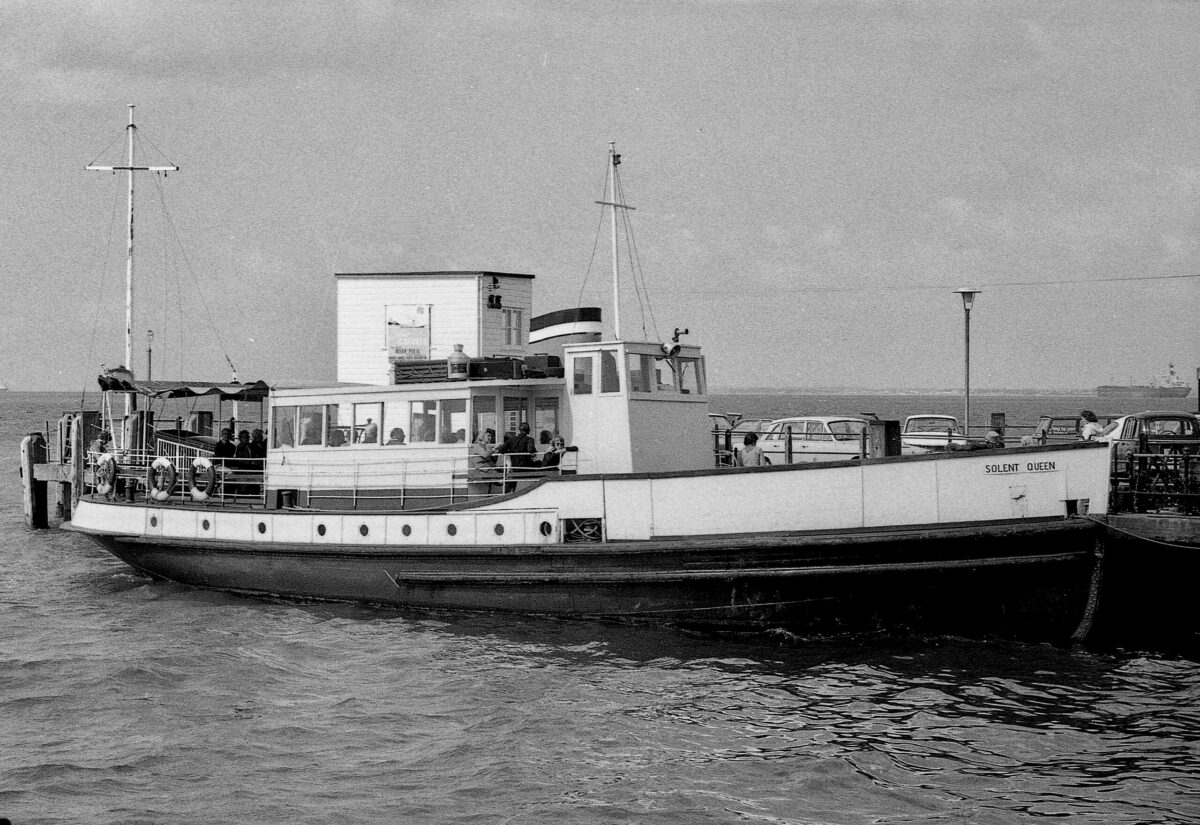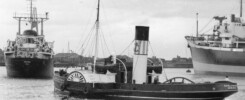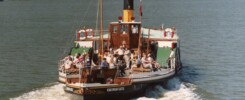
On Wednesday 11th February 1948 training continued aboard the Humber paddle steamer Tattershall Castle in the use of the new fangled radar set which had been installed on the ship in January.
Following nationalisation on 1st January 1948 the London and North Eastern Railway, which owned Tattershall Castle, Wingfield Castle and Lincoln Castle, was absorbed into the giant conglomerate of British Railways with these three ships becoming part of their Eastern Region. One of the first actions of the new management was to install a radar set on Tattershall Castle.
Fog had ever been an issue on the Humber with the fast tides coupled with the density of traffic at busy times making navigation on its waters very difficult in restricted visibility. Looking back over the years there had also been some fairly serious accidents in fog. For example in 1933 the railway ferries Frodingham and Killingholme had collided mid way on their route between Hull and New Holland with both ships being damaged and a three foot hole cut in the side of Killingholme.
As a new and state of the art bit of kit costing £3,000 (around £100K in today’s money) radar was certainly not cheap so it is all credit to the new railway company for being ahead of any regulations on this issue and choosing of their own volition to make this sizeable investment to improve safety in the first instance on at least one of their Humber paddle steamers. A radio telephone was also fitted at the same time. In the ensuing weeks all the captains were given training aboard Tattershall Castle in the use of all this new equipment.
Despite this massive investment the Humber remained radiantly fog free until the morning of Saturday 28th February when it came in thick as guts. The Hull Daily Mail takes up the story:
Today for the first time in its 100 years of history the Humber ferry was not delayed by the notorious Humber fog, although visibility was down to 400yds this morning. While trawlers which had left St Andrew’s Dock dropped anchor until it cleared the Tattershall Castle steamed steadily and confidently between Hull and New Holland.
The Lincoln Castle was fogbound on the Lincolnshire Coast and the Tattershall Castle would have been in the same plight had she not been fitted with radar equipment just under a month ago.
This morning for the first time conditions on the river were bad enough to need its use. ‘It told me everything I wanted to know ‘said Captain N Waldie after he had made two round trips.
Not until after he had left New Holland at 8.25am did conditions really get bad and visibility went down to 40 yds. But watching the green ray sweeping over the fluorescent screen installed on the bridge he was able to bring the ferry boat successfully through the shoals and currents of the Humber until the Victoria Pier loomed out of the mist.
Tattershall Castle was the first commercial paddle steamer in Britain to be fitted with radar. The Southern Region fitted it to their Portsmouth paddle steamers Sandown and Ryde in 1950 but not to their Whippingham. P & A Campbell’s Glen Gower had it put on for her cross Channel work in the mid 1950s for which by then it was a requirement. The Clyde paddle steamers acquired it in the late 1950s. Bristol Queen had a set put on for the Coronation review ii 1953 but had it taken off again afterwards. She would have to wait until her last season in 1967 to have one fitted again.
To this day there remains no requirement for Class V and Class VI domestic passenger vessels operating on rivers and undertaking limited coastal operations not more than three miles from the shore and not more than fifteen miles from their starting points to be fitted with radar. Some like KC do have it. Some don’t. It is up to the owner or operator.
Radar has come on a great deal since 1948 and its proper use is better understood. Today the International Regulations for the Prevention of Collisions at Sea set out in a separate section the different rules for ships in fog using radar which are quite separate from what they must do when they are in clear view of each other.
Radars are now much more sophisticated, give much clearer information and are much easier to use than their earlier cousins. I remember the first radar course I took many years ago on which great emphasis was placed on being able to manually plot on paper the targets on the radar screen so that you could more accurately decipher the trajectory of each ship. Whilst that is still a handy back up, modern radars do all that for you on the screen as well as delivering a plethora of other information as well.

In my youth many of the vessels I travelled and served on were not fitted with radar. I remember bringing the 150 passenger vessel Solent Queen back from Lulworth Cove to Weymouth one day in the summer of 1982 in thick fog which came down suddenly in the middle of the afternoon cruise. We didn’t have radar or an echo sounder. I had previously worked out the course making due allowance for the wind and tide so we kept on that. When we were starting to get close to having run the distance I asked one of my crew to start taking soundings with the lead line in the bow. From that the depths suggested that we were coming up towards Weymouth Harbour. Then we heard the distant but quite distinctive ringing of the bell on the end of the Pleasure Pier dead ahead. Goodness that sound was such a huge relief to me. We homed in on that and in due course berthed safely alongside.
All the electronic kit available to mariners today has transformed the ability of ships to know where they are and what is about them at all time and in all conditions. And it is good to know that a paddle steamer in the shape of Tattershall Castle was in the vanguard of this revolution being fitted with an early edition radar set more than seventy years ago.
Kingswear Castle returned to service in 2023 after the first part of a major rebuild which is designed to set her up for the next 25 years running on the River Dart. The Paddle Steamer Kingswear Castle Trust is now fund raising for the second phase of the rebuild. You can read more about the rebuilds and how you can help if you can here.
John Megoran
This article was first published on 11th February 2021.


